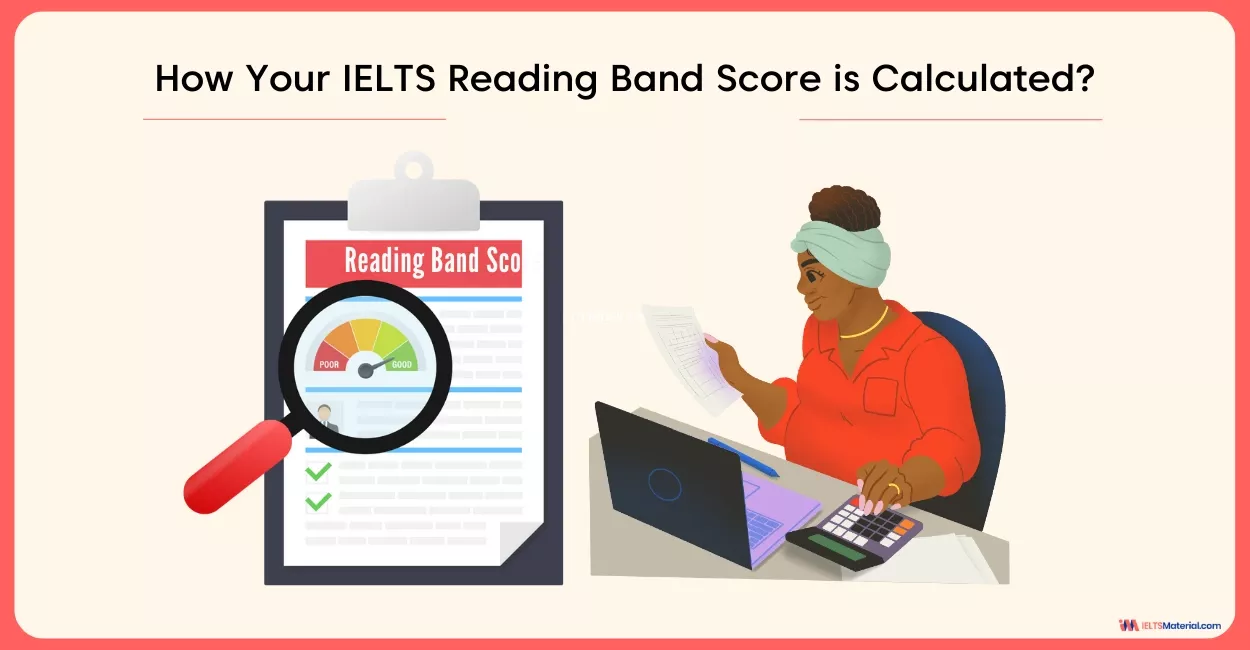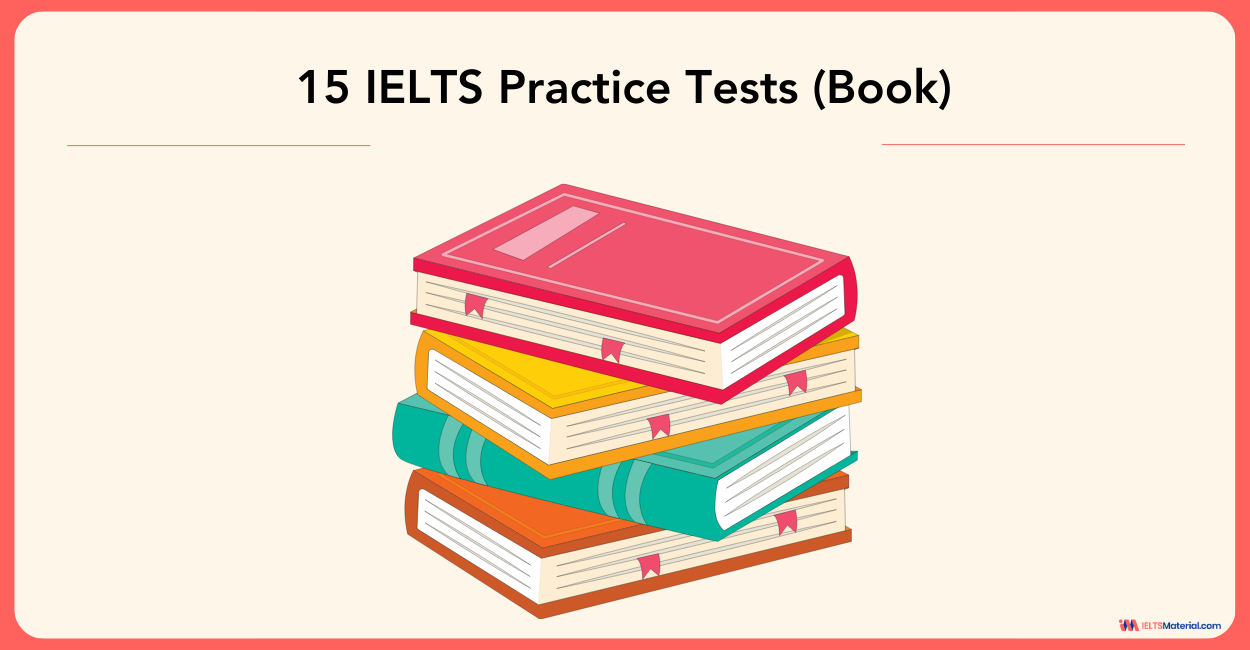IELTS Reading Tips And Techniques To Increase Your Reading Speed
13 min read
Updated On
-
Copy link
Struggling with reading speed in the IELTS Reading section? Learn the IELTS Reading Tips and Techniques to Increase your Reading Speed and explore strategies to tackle the Reading Module while aiming to achieve a band 8+.
Table of Contents
- Overview of the IELTS Reading Exam
- Golden rules from the IELTS Reading Tips and Techniques to Increase your Reading Speed for a Band 8+
- Why do some people read more slowly than others?
- IELTS Reading Tips and Techniques to Increase your Reading Speed
- How to Complete the Answer Sheet by Understanding IELTS Reading Tips and Techniques to Increase your Reading Speed?
- IELTS Reading Tips and Techniques to Increase your Reading Speed Based on Question Type and Score a Band 8+

Limited-Time Offer : Access a FREE 10-Day IELTS Study Plan!
One of the challenges in IELTS Reading for test-takers is reading quickly for which you need to learn IELTS Reading Tips and Techniques to Increase your Reading Speed. In each IELTS reading test, you will encounter around 900-2000 words along with 40 questions. This is one of the reasons as to why many IELTS candidates fail to finish the IELTS reading test because of the time taken to read the passage.
While taking the IELTS reading test, you need to find out ways in which you can improve your reading speed and achieve the band score of 8+. However, you have to be conscious that while taking a reading test spanning over 2000 words, you are given only 60 minutes to read. You will not have sufficient time to gather every detail. Therefore, it is important to practice well before appearing for the exam so that you get a hold on it.
Let's check out IELTS Reading Tips and Techniques to Increase your Reading Speed!
Overview of the IELTS Reading Exam
The IELTS Academic Reading consists of three reading passages consisting of around 2000 words. The texts can be on a range of different topics. At least one of the texts will contain a detailed logical argument. The texts become more difficult to understand, progressively. The table below shows the overview of the IELTS reading exam in order for you to be aware of the same and excel in the exam with a band 8+.
| Topic | Description |
| Duration | 60 minutes |
| Number of Questions | 40 |
| Passages |
3 sections
|
| Scoring System |
1 mark per correct answer |
There are definite techniques you can learn to improve your reading speed. These tips will be helpful in both Academic and IELTS General Reading passages. However, it is imperative that you practice regularly to build your confidence and level up the preparation. This is because increasing your reading speed can make a huge difference in your overall IELTS band score. Not only it will help in scoring a band 8+ but also helps in other modules in the IELTS test.
Before we move towards the strategies, let's check out the video below and understand how to read 3x faster and achieve a band 9.
Golden rules from the IELTS Reading Tips and Techniques to Increase your Reading Speed for a Band 8+
Before starting your practice, you must learn the golden rules in the IELTS Reading exam. There are certain aspects which one needs to be aware of before attempting any practice test. Below are some of these rules which will help you gain a higher IELTS Band Score.
- Answer the questions quickly and accurately. If you can’t answer a question quickly, leave it and return later to attempt it.
- As the passages are long, you don’t have to read them in detail. Skim and scan them to grasp the relevant information.
- The level, the texts, and the tasks become difficult, progressively. Therefore, attempt the easy questions as quickly as possible, to give yourself more time for the difficult questions.
- You have around one and a half minutes for each question. Therefore, Time Management for IELTS Reading is crucial which you can practice
- Do not panic if you can only do just three questions out of seven. Go through them again and again, but quickly.
- When you finish one passage, check your answers and try to fill all the blanks.
- The questions usually follow the order of information in the text.
- The questions are usually paraphrased based on the text provided so always look and focus on the meaning in the text, not the exact words.
- The questions test your general understanding (G) and specific detail [S].
- Some question types are used to test how you deal with specific information and general meaning. For example, a multiple-choice question can test for detail or understanding of the whole text.
- The questions do not test your knowledge of English, but your ability to use English.
Why do some people read more slowly than others?
There are several reasons why you might read at a slow pace. There are a combination of factors which can affect your reading speed even though you practice on a regular basis. There are three main factors which could be the reason as to why individuals read slowly and need a few IELTS Reading Tips and Techniques to Increase your Reading Speed.

The table below suggests the three key aspects in detail which could be the reason as to why some people find it difficult to increase their reading speed.
| Aspect | Description |
| Differences in Processing information |
|
| Proficiency in the English Language and the Vocabulary |
|
| Purpose of reading |
|
Book a FREE Demo and begin preparing with the IELTS expert
IELTS Reading Tips and Techniques to Increase your Reading Speed
In general, we read at a faster pace when we are getting the general meaning of the text (skimming) or looking for specific words or phrases (scanning). Using these skills is very important when you check out the IELTS Reading Topics for General and Academic, but if we just use these techniques all the time, we will miss out on important details and get the answers wrong. Let’s learn to use the techniques effectively which are mentioned in the table below.
| Technique | Description |
| Skimming |
|
| Scanning |
|
| Skim and read |
|
| Scan and skim |
|
1. Skimming
-
Bask skimming techniques
-
- Skim the title and the questions. They give you a summary of the passage
- Skim the words only, i.e. the nouns, main verbs, adjectives, and adverbs. Do not look at words like the, a, in, is, Underline the words in a few paragraphs. Then read them again.
- Skim only the basic structure of the sentences/clauses: the subject, verb, and the object (if there is one). Don’t look at adverbs and adjectives.
- Without reading the text, mark the connecting words, e.g. moreover, also, however, etc. Practice until you can see the connecting words automatically when you look at a paragraph. Then you do not need to mark them.
- Skim so that you recognize common types of paragraph organization, like effects, causes, methods, etc.
- Skim only the nouns in the text to give you a general picture. Be clear about the differences between a noun, verb, adjective, and adverb. Learn to recognize them and know what their functions are in the sentence.
-
Intermediate skimming techniques
-
- Read the first sentence of a paragraph and then skim the beginning of each sentence in the paragraph. This will show you the general theme of the paragraph.
See the text organization below. For example:
“His career was rather chequered, spanning a period of 30 years. He … After resigning, he … Not long after he … Van Damme then ….”
The referring word ‘he’ carries the information through the subsequent sentences.
-
- Ignore and do not underline words you do not know. Focusing on words you do not know will slow you down.
- Skim the verbs in each sentence. This shows you if the content of the text is changing
- Start at the verb in each sentence and look at everything after that. The verb usually marks the beginning of new information in the sentence.
- Cover the left hand or right-hand side of a text and skim. This stops you from concentrating too hard on the meaning.
- Skim a text to understand the overall meaning. This can be facts or ideas. For example, skim a text line by line without looking at the meaning and pick out words that form a pattern/ picture or that have something in common. As you skim, remember writers have to avoid repetition so they have to use synonyms to create a theme.
-
Advanced skimming techniques
-
- Skim the text forwards or backwards and note words which form a general picture: airports, passengers, lounge, fly.
- Locate the crux of the paragraph. It is not always at the beginning.
- Use your knowledge of different types of sentences and paragraph organizations to predict and move around the passage.
- Look at a central point in a paragraph and then allow your eye to wander around the paragraph skimming the nouns, verbs for the general idea
- Use the questions to help you navigate the text.
Seven Skimming IELTS Reading Tips and Techniques to Increase your Reading Speed
- Use a pencil to help you skim. This helps train your eye.
- Skim each sentence from left to right.
- When you’re confident, skim left to right and then right to left and so on.
- Move a pencil vertically down through the centre of the text forcing your eye to look quickly at the text on either side.
- Skim diagonally through the text – top left to bottom right. You could also go backwards diagonally or vertically.
- Jump in different directions through the text. Then stop now and again and read
- Skim the ends of sentences. A sentence is divided between information which refers to the previous sentence and information which is new. References generally come at the beginning and new ideas at the end. Skim the ends of the sentences.
Example: A man walked into a shop. The man picked up a newspaper. The newspaper …
- At all times try not to get caught up in the details.
2. Scanning
-
Choosing scanning words in the questions
- Choose your scanning words carefully. For example, with True, False, Not Given, read all the statements and look for words that occur frequently. These are likely to be the general subject of the passage, so they will not help you scan.
- Look for words that relate to the general subject. They can be nouns, names, dates, etc.
- Keep in mind the basic structure of a sentence: Subject + Verb + Object. Anything extra qualifies the sentence, e.g. additional clauses, adjectives, adverbs, negative words, comparisons. These words/phrases help you understand the focus of the statement. For example, you should notice a negative word like ignore It is probably not a scanning word, but a word that tests your understanding of the text
- Look for words and ideas that help you traverse through the text. This is a very efficient tool. Look at the questions together and not in isolation. The questions can often be subdivided: two relating to one area of text; three to another, etc. Connect the questions, group them and use this to help you to jump around the text.
-
How to scan slowly?
Scan from left to right left to right. You must look only for your chosen scanning words. If you don’t, this will be a slow and ineffective technique.
Level up your preparation with the The Ultimate Guide to IELTS General Reading: Tips, Tricks, and Practice (Mock) Tests
Effective Scanning Techniques from IELTS Reading Tips and Techniques to Increase your Reading Speed
- To stop yourself from reading every word, start at the end of each line or paragraph.
- Scan from right to left, right to left through the text. This prevents you from reading the text.
- Alternatively, scan diagonally through the text from bottom right to top left, or vertically, from the bottom to the top.
- Move through the text in a zigzag pattern. This stops you from reading. Move faster each time you practice.
- You can also scan forward, but you must stop yourself from reading the text.
- When you have gained confidence, scan forwards left to right, right to left and so on. You do not have to waste time going to the beginning of a line each time!
- Very efficient readers can look at the centre of a paragraph and not allow their eyes to move. Then, take everything around the central point. If a paragraph is long, do it in stages.
- You will pick up the meaning as you scan. Slowly, you will become an efficient reader!
How to mark the text when you skim or scan?
- Use a pencil so you can rub out mistakes.
- Only underline keywords: scanning words from the questions and organizing words.
- Underline as little as possible. Too much underlining makes it difficult to find essential information. Remember more is less.
How to Complete the Answer Sheet by Understanding IELTS Reading Tips and Techniques to Increase your Reading Speed?
Remember to use the correct techniques to ace the IELTS Reading module as you attempt IELTS Reading Practice Test and fill the answer sheet. As you practice, the following tips could be useful when you complete the IELTS Exam Reading Answer Sheet .
- Fill in the answer sheet carefully. Use a pencil.
- Mark the end of the first two passages on the sheet with a short line. Aim to complete one stage at a time.
- Fill in the answers directly onto the sheet and in the correct order.
- Write clearly. Give only one answer unless the instruction requires you to do so.
- Write in the correct spaces and keep within them.
- Check your spelling, especially common words and follow the word limit.
- Do not copy words from the question stem or paraphrase from the text. The answer will be marked incorrect.
- Skim/check your answers when you finish. Choose answers at random to check, or check them backwards. Also, check your answers against the questions to make sure the grammar is correct.
Grab the Comprehensive IELTS Reading (Academic) Band 8 Preparation Course and start your journey today!
IELTS Reading Tips and Techniques to Increase your Reading Speed Based on Question Type and Score a Band 8+
As you will be encountering different question types in the IELTS Reading module, it is ideal to understand which strategy to follow when you appear for the IELTS exam. The table below depicts the specific techniques which you can incorporate as you prepare for the exam.
| Question Type in Reading | Description |
|
True/False/Not Given Yes/No/Not given |
|
| Multiple choice |
|
| Sentence Completion |
|
| Summary Completion |
|
| Matching Heading |
|
Improving your reading speed doesn't mean hurrying through the information. Remember that reading with comprehension is vital in the reading module. Always note the areas of improvement and track your progress over time as you prepare with the IELTS Reading Practice Tests. With consistent practice and utilizing the right strategy, you will be able to achieve a band 8+.
Also check :
Practice IELTS Reading based on question types

Start Preparing for IELTS: Get Your 10-Day Study Plan Today!
Explore other Reading Articles
Recent Articles

Nehasri Ravishenbagam

Haniya Yashfeen

Haniya Yashfeen

Haniya Yashfeen








Post your Comments
2 Comments